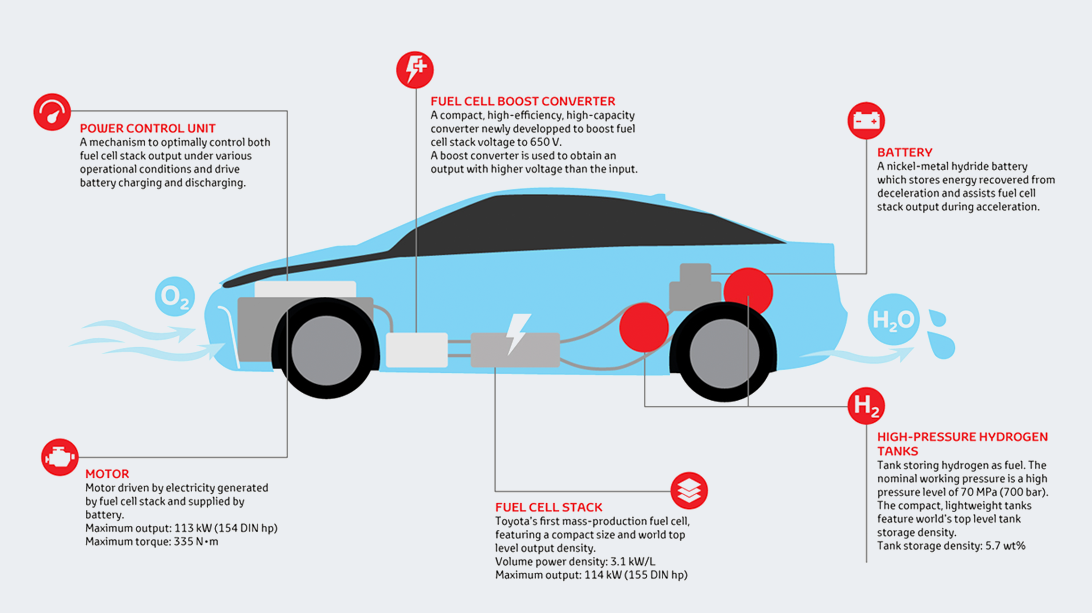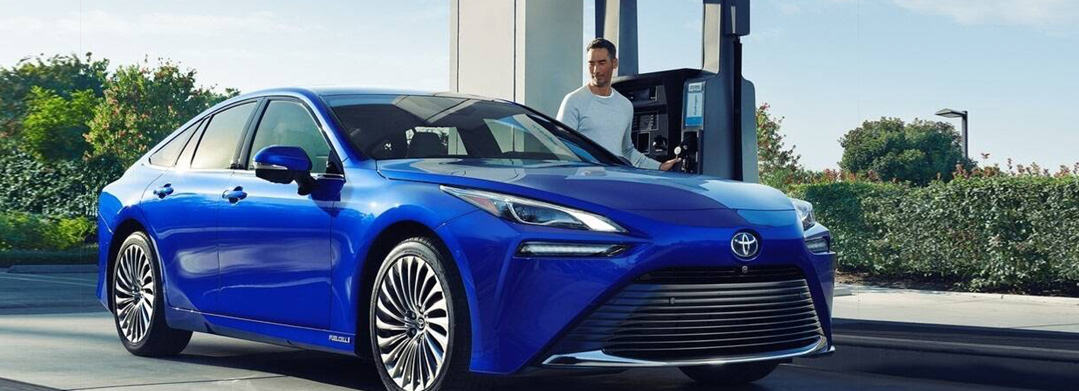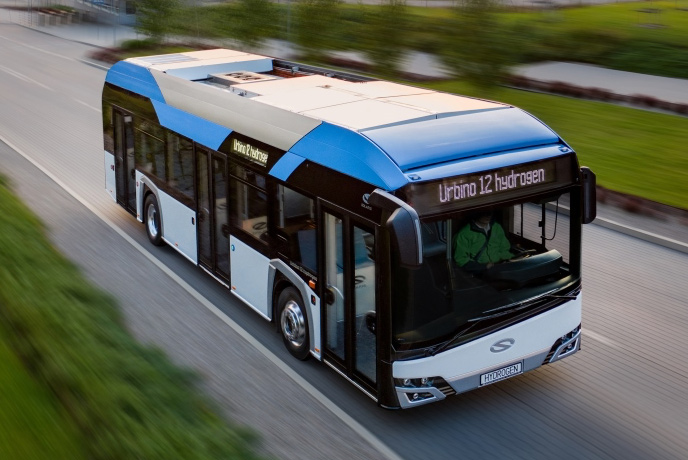How it works
Motion of an FCEV is supported by an electrical motor drivning the vehicle’s wheels – this principle is very much the same as in battery electric cars. What makes fuel cell cars unique is a way of storing energy necessary for travel. Instead of using large packs of rechargable batteries, the energy is stored as pressurised hydrogen filling high-pressure tanks placed in the vehicle’s chassis.
A small size rechargable battery is also included onboard and it is used as complementary energy storage during rapid acceleration or for recovering the energy when the vehicle is breaking. All FCEV:s in the market fulfill actual safety standards that apply for all road vehicles drivning on public roads.
Hydrogen used as fuel for FCEV:s comes from a reverse process to the above. A continuous industrial production process is run inside a hydrogen production unit, based on a process of electrolysis. The electrolyser utilises just clean water and it is powered by the electricity from power lines to split the water into molecules of oxygen and hydrogen, which are then captured in separate pressurised storage tanks. The electrolysis is run using electric power from renewable energy sources like wind or sun, thereby providing fuel with zero emission footprint.

Transition towards zero-emission transports powered by electricity

Production of hydrogen from renewable energy sources could actually utilise excess energy from wind or sun, when supply of the electric power from these irregular sources exceeds demand for power in the power distribution system.









